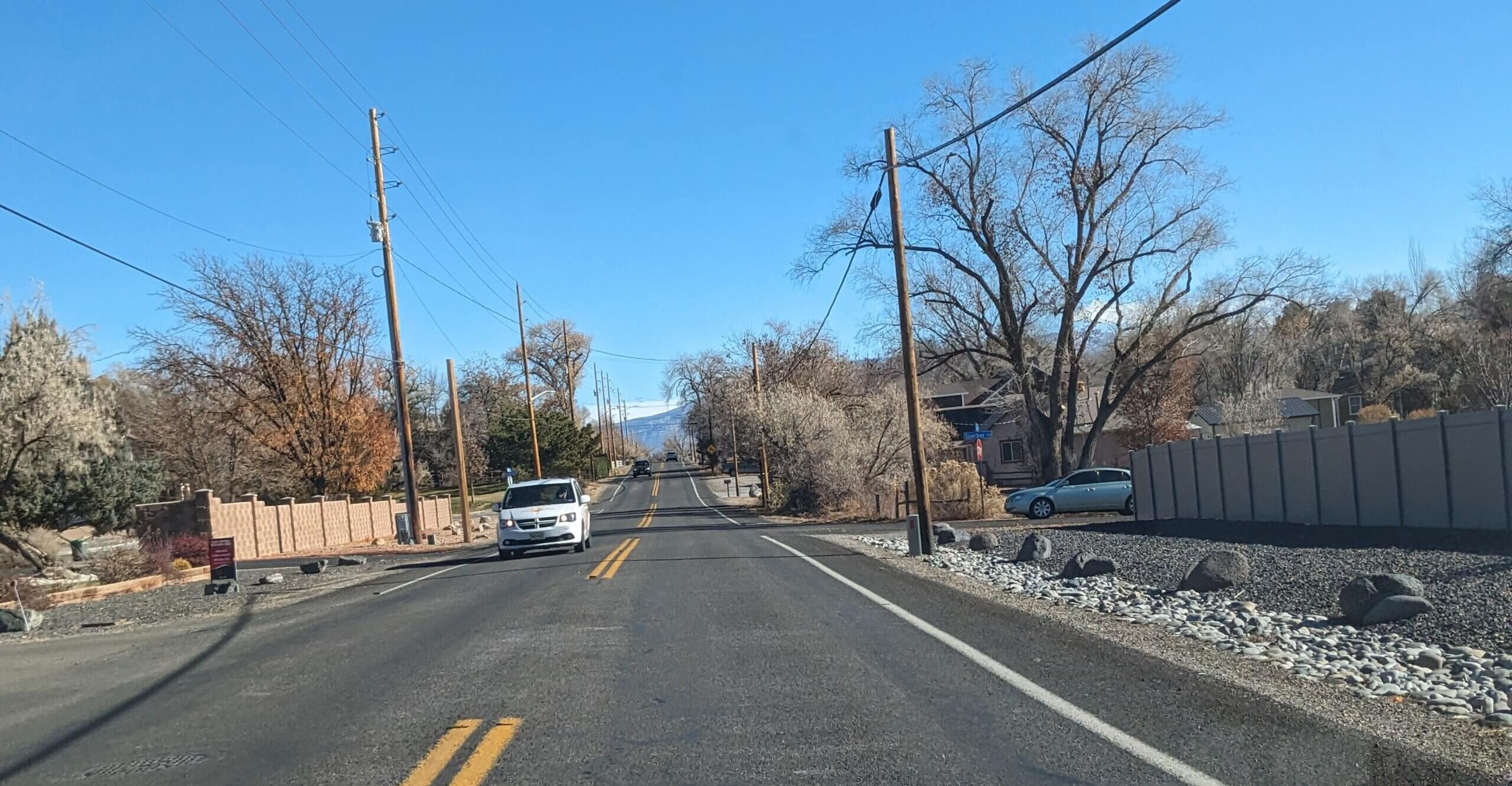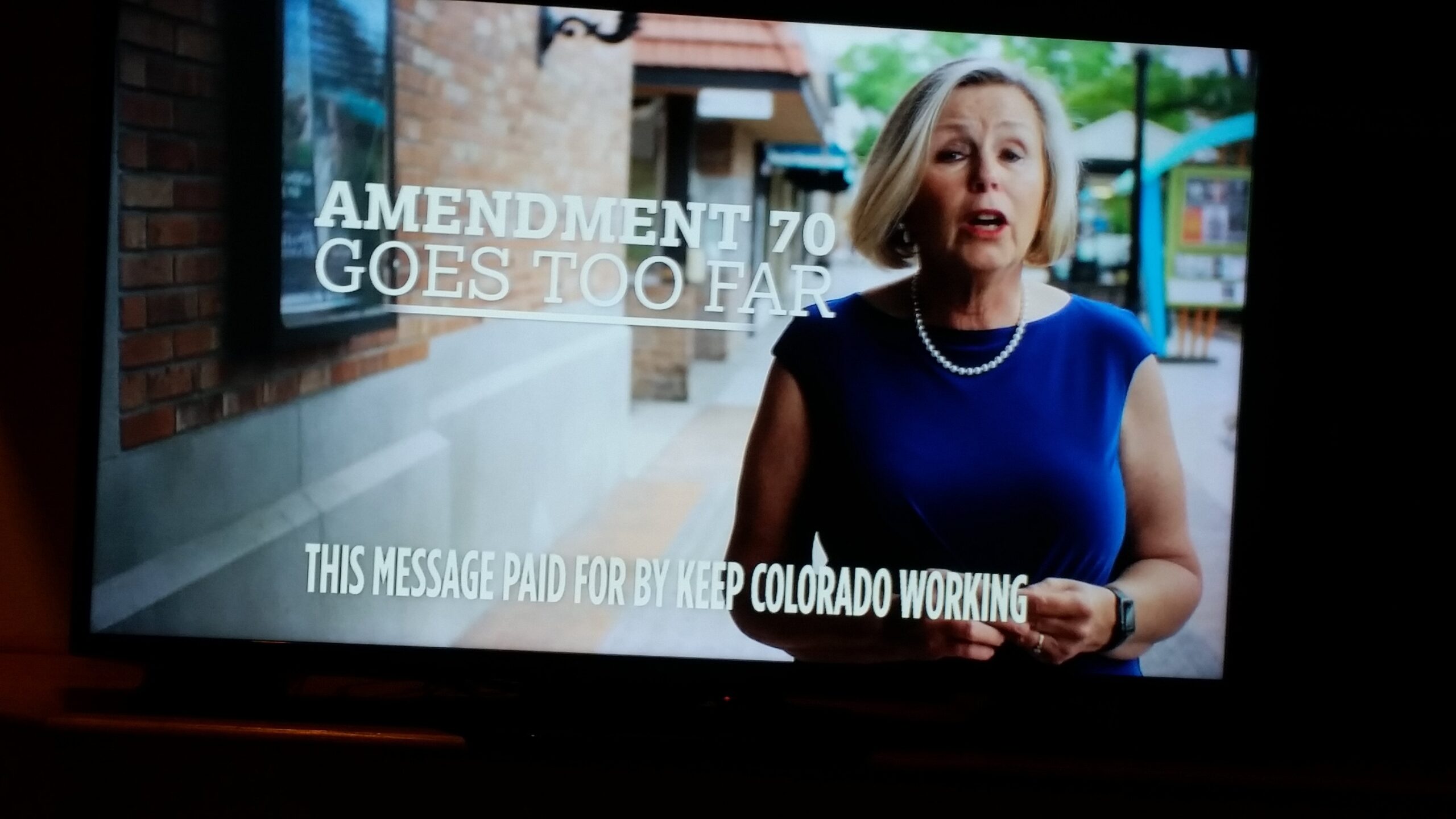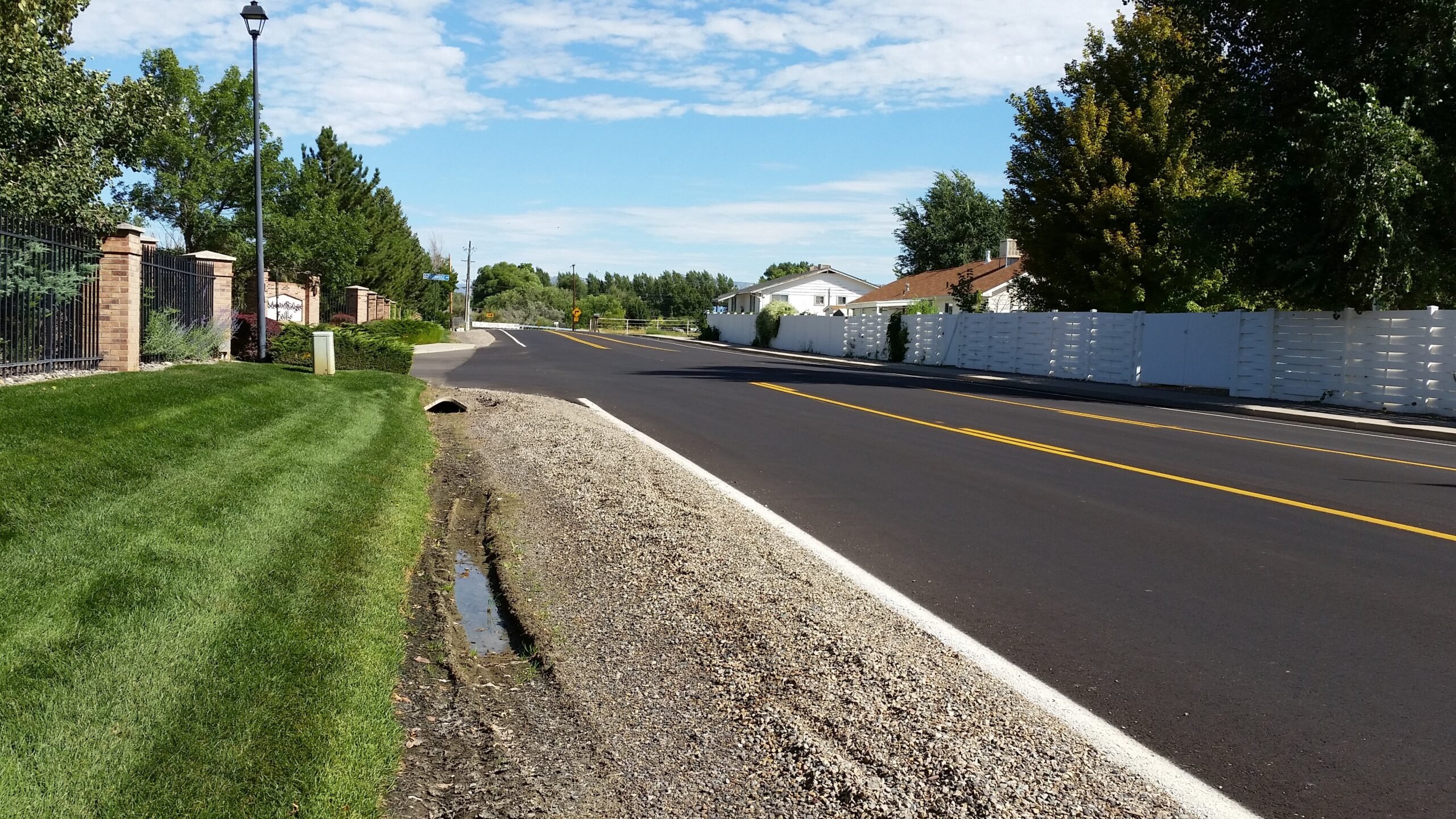
Former Grand Junction Chamber of Commerce President Diane Schwenke, who has a consulting business now called “Schwenke Solutions,” is working as a consultant for the Grand Junction Area Realtors and Homebuilders Associations, helping them oppose the City’s new proposed Transportation Engineering Design Standards (TEDS) that are designed to make streets safer for pedestrians, bicyclists and people taking public transportation.

To that end, Schwenke authored a strange letter to the editor to the Daily Sentinel November 26 that praised a new housing development on former farmland in Nebraska that lack curbs, gutters and walkable sidewalks. She praises the beautiful agricultural setting of the development, saying it has “a layout that maximizes the view of fields of corn and soybeans on the adjourning hillsides,” but doesn’t seem to understand that such developments destroy the lovely fields and farms she likes to look at, and will cost taxpayers in the long run as cities have to add curb, gutter, drainage, adequate sidewalks and other amenities to make them safer and more attractive.
Schwenke wrote the letter to help her realtor and developer clients oppose the new transportation design standards the City of Grand Junction is proposing that are aimed at improving safety and mobility for walkers and bikers. Plans include things like widening sidewalks from 4 ft. to 6 ft in subdivisions and require sidewalks on both side of many streets, designs to slow traffic down on smaller streets to make them safer, adding lighting to subdivisions and other tweaks that will make the City more pleasant and attractive to live in.
Realtors, developers and the G.J. Chamber of Commerce don’t want the changes in the new plan
Realtors and developers argue the changes will cost them more money, which they will pass on to homebuyers, make it harder to build housing developments and anyway people don’t complain about things like narrow sidewalks. The Chamber is taking their side.
But city planners back the new plan, saying say narrow sidewalks make it hard for two people to walk side by side, pass those who are pushing strollers or using wheelchairs, and that big mirrors on vehicles parked alongside narrow sidewalks encroach on pedestrians’ already small space and make it even smaller.
There are lots more interesting back and forth on comments about the specifics of the plan on the website GJSpeaks.org.
City Council has a hearing on the new TEDS proposal on Wednesday, December 6
A Grand Junction Chamber newsletter is urging its members to “Help the Government Affairs team fight GJ’s overpriced new planning regulations.”
Schwenke is helping realtors and developers fight these new standards.
In short, if you enjoy a town that is pedestrian and bicycle friendly and not just geared to vehicular travel everywhere, tell the city you support the new TEDS plan by leaving a recorded message on the City Council Comment line at (970) 244-1504, or by emailing City Council at council@gjcity.org


I don’t wish this on Ms. Schwenke, at her age, but she may find herself in a wheelchair or using a walker and that picture with no sidewalk and a 4″ deep car tire groove is just the kind of obstruction that vex the handicap.
Thanks to all who supported and helped get TEDS approved. City Council (except for 2 conservatives) provided solid, thoughtful reasoning for their votes and we should thank them for this step in improving our City! Support occurred organically and represents the concerns held by most citizens that our active transportation infrastructure is out of date and needs improving. This is such an obvious benefit for everyone EXCEPT for those on the top rungs of the housing food-chain. It’s why they resurrected and paid Ms. Schwenke and Hogan Peterson. They spent a bit of time and money on “advertorials” in the Daily Sentinel making real estate agents seem so concerned with those struggling to find affordable housing. Newsflash: builders have enjoyed increased profit margins over the last 5 years, adding 15% to the price of a new home which makes the $1000-$2000 cost of the TEDS requirements seem paltry. I know they need to make a profit, but PLEASE don’t hold yourselves out as being benevolent and looking out for the less fortunate. This savior complex attitude and the “bikers are elitists” was even more evident amongst those speaking for GJARA, including their paid consultants. Soooo let’s recap: realty agents control access to the Multiple Listing Service (MLS) as a part of their business model. This allows control of the already tight and expensive (due to mortgage rates) market by limiting access. They invoke an average 5.5% commission (but I guess THAT’s not a tax, just good business) per every residential real estate sale. This happens whether they work super hard and keep people out of harm’s way due to the massive technical aspect of some transactions, or they sit back with large-scale single family home development and watch the checks roll in. Unfortunately, claiming to be protectors of home ownership and property rights isn’t really supported by the facts. (See: NAR $2 billion class action suit). The wild claim that the $1000 increased cost associated with improved sidewalks and buffers prices 81 (!) out of the market is simply incredible. So how many people are priced out by a nearly 6% point commission? No one because that’s the way the industry works. Other problems with this situation was that the rich and powerful who are against TEDS claim they “weren’t given a seat at the table” and their amazing solutions for less expensive options to developers were rejected out of hand. That’s not really factual, and is similar to other citations of misinformation/disinformation purported in the discussion both in Council Chambers and in the local newspaper.
Regardless, now that TEDS has FINALLY been approved, elitists bikers and enviro-pedestrians can continue their efforts to take over the valley and legislate that everyone driving in town bow down to us while wearing Lycra bike shorts and hiking boots! Viva la (wheel) revolution!
Shocker!!! She’s been a bad actor since I moved to this town 25 years ago. I had so hoped after the Chamber she’d move on in her life and quit wreaking havoc on this town. Thanks for calling this out. I will take action.
Shifting costs from developers to taxpayers is what this is all about. In the long run, homeowners are going to demand sidewalks so their kids don’t have to walk on the shoulders or in the ditches on their way to the bus stop. I’ll bet homeowners prefer safe sidewalks over a nicer view of a (soon to be developed) cornfield.
Schwenke would prefer a run down city with no amenities and no taxes so her rich friends could have even more money in their protected enclaves. When she headed the Chamber she was always against wage increases when the local average was 1/3 of her income. She helped destroy the drainage district so we would have little protection against flooding. I wonder if her home town of Beatrice, Nebraska, looks as bad as she wants Grand Junction to be—will it be “junktown” or “cheaptown”?
I left a message with the GJ city communications staffer supporting TEDS. I think best would be to go to the GJ Council Meeting and speak out.
Yes agree on all relevant points. Also cities and towns are now rated on their “walkability” scores, another indicator of quality of infrastructure and life.
Ms Swenke has a history of poor decisions from her Chamber of Commerce dynasty, who could be surprised?
Oh good lord! What is wrong with people!? Towns and cities with sidewalks, bike paths and bike lanes have fewer rates of poverty, higher rates of education, higher levels of happiness and overall, improved quality of life. Who doesn’t want that? I just got back from Kentucky visiting in-laws. My husband and I could not go for a walk because the roads had no sidewalks and we would have been walking along a narrow, busy road. We wanted to go to a State Park because we knew there would be nature trails there, but sadly there were no state parks nearby. We were stuck in the house with no way to get fresh air and exercise over our Thanksgiving break. It was so depressing. I started looking around at people while I was in Kentucky and noticing most people were overweight and looked depressed and sad. My husband grew up living in Alabama and Louisiana and said it’s the same way down there. Probably why they call the South the stroke belt. When people have access to sidewalks, all kinds of opportunities open up. They can go for a walk after work and know they are safe not being on a road. They get some peace of mind while getting their bodies moving. If they have a dog, it opens up a safe place to walk, adding a positive impact to the pet and owner’s life. So many studies are coming out that show quality of life indicators go up when towns and cities have access to walking and bike paths. Schwenke, the realtors and developers are trying to take us back to another time – a time when we did not know any better – but we now know better.